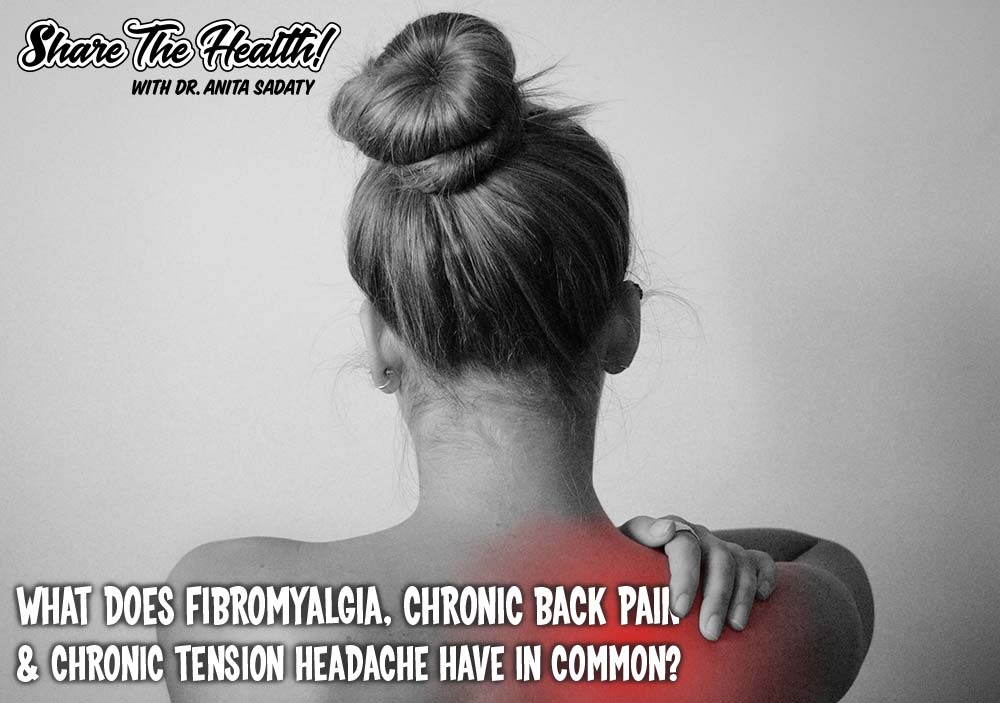
Physical Medicine & Rehabilitation Specialists
For this week’s Share The Health post I spoke with my colleague Dr. Arti Panjwani, DO — a physiatrist and founder of Elevate, a medical practice that specializes in fixing pain. Most of you (and by “you” I mean “me”) may not know exactly what a physiatrist is… Apparently, these are doctors trained as Physical Medicine and Rehabilitation specialists who diagnose the cause of pain and develop a comprehensive treatment plan. Now not all physiatrists think alike. What attracted me to Dr. Panjwani is her integrative holistic approach to addressing pain — sounds familiar no? Not only is she conventionally trained, she also sees the body as a whole, not a collection of individual parts operating independently. This is where I think that the traditional pain management approach may be a bit myopic and a little “one size fits all.”Got Shoulder Pain?
“Got shoulder pain? Let’s inject, massage, operate on, stretch, filet, saute and broil that shoulder.” But what if the shoulder pain is not a focal injury but instead a strange hypersensitization of the shoulder nerves due to general body inflammation?Got A Headache?
“Got a headache? Let’s medicate, inject, medicate and then medicate that head.” But what if you are sensitive to a food that you are eating everyday that is causing headaches? What if you get headaches every time you walk into your office? Looking “only” at the area of pain doesn’t really resonate with me. Nor does it work for all patients. I’m excited to let you in on our conversation about how these seemingly unrelated conditions (fibromyalgia, headache and low back pain) are considered “chronic pain syndromes” and what they share in common: a hyperactive central nervous system.Question: What IS Pain?
Two seconds of science here (don’t be afraid)… While the sensation of pain may “seem” related to one part of the body, the experience of pain is actually created in the brain. When a specific area of the body is injured, a message is sent to the brain; the brain interprets these messages and produces a pain sensation as a warning signal. The take home message here is that the spinal cord and brain can either reduce or exaggerate pain signals based on different factors:- stress
- diet and food sensitivities
- prior emotional or psychosocial trauma
- quality of sleep
- physical factors
- physical inactivity or overtraining
Question: When Is Pain No Longer Normal?
In acute situations, pain is normal and protects the body from further injury. If you feel pain from twisting your ankle while playing tennis (I’ve only done that like four times, in case you’re wondering…), your body is doing its job. However, when pain becomes chronic (more than three months), it is no longer normal. According to Dr. Panjwani, chronic pain conditions like back pain, chronic headaches, and fibromyalgia occur because the nervous system becomes sensitized – it “turns up the volume” in response to any unpleasant or even normal stimulus. This leads to more pain at lower thresholds, even when tissue damage or local inflammation may not be present.Have You Ever Wondered Why You’ve Tried Multiple Pain Medications and Procedures, Yet Nothing Seems To Work Long-Term?
In my functional medicine practice, many of my patients with chronic musculoskeletal pain conditions greatly improved as a “side effect” of my lifestyle medicine approach for other unrelated complaints or symptoms, like stomach issues, heavy periods or mental fatigue. This, despite having tried multiple pain medications and injections in the past. Dr. Panjwani explains that pain medications are effective in only one out of three individuals with chronic pain. Those with longstanding centralized pain are much less likely to respond to opioids, NSAIDs, surgeries, or injections. In fact, the longer one has suffered from chronic pain, the less likely they are to respond to drugs or procedures. This symptom only treatment approach addresses just the tip of the iceberg. The latest and strongest evidence supports the use of non-drug therapies to address root causes, for sustainable pain relief.So, What Do We Do About It?
Step One: Identify The Pain Mechanisms Involved. (Most pain syndromes are due to a combination of factors)- Nociceptive (due to structural damage or inflammation)
- Neuropathic (due to a pinched nerve or damage to peripheral nerves)
- Centralized pain (due to a problem with the central nervous system and how pain is processed)

What I Learned…
Pain is a complex phenomenon.
It may begin with an injury, but over time develop into higher levels of pain coming from the central nervous system.
Experiencing longer standing pain creates more pain and with it, maladaptive behaviors (like reduced physical activity, sleeplessness, depression, poor eating patterns or self medicating behaviors with alcohol and drug use).
These maladaptive behaviors negatively impact quality of life, which feeds back to the spinal cord and brain, creating more pain.
At Elevate, Dr. Panjwani works to determine which mechanisms are at play in a patient’s pain condition, and to what degree. She then focuses treatment for both symptoms and underlying dysfunction. Their comprehensive and individualized programs target multiple entry points in the cycle of pain, treating not just structural components but also underlying mechanisms and contributors.
Real Life Case Study:
S.M is a 42 year-old, mother of two young children, with a 10 year history of chronic widespread pain. Diagnostic testing was unrevealing. Sometimes her pain radiated to her leg, other times it was in her neck or her shoulders. It seemed to her that when one area improved, another area began to hurt. She saw multiple specialists, tried various medications, and went through several epidural steroid injections. She experienced relief for a few months at time but pain always returned to its prior level.
All areas of her life had been impacted by her pain: she was not getting restful sleep; she wasn’t able to exercise; while she tried to maintain a healthy diet, she found that she was craving unhealthy foods and was gaining weight; and she felt guilty about the impact of her pain on her relationships, most importantly with her kids and her husband.
By the time S.M. reached out to me, she was ready for something different. After careful assessment and examination, we started out with the goal of reducing her pain with non-drug modalities. We used Photobiomodulation (light/laser therapy) to reduce pain, oxidative stress and inflammation, as well as promote healing. After several treatment sessions, S.M. felt that pain had improved and she was able to start addressing the root cause of her pain. We corrected her biomechanics, addressed asymmetries in muscle strength and improved overall structural integrity to better support her joints and spine through home exercises and physical therapy. We fixed her challenges with sleep, improved her fitness, enhanced her diet, and incorporated daily practices to calm her hyperactive nervous system.
Eventually S.M. was discharged from our care in great shape. Her pain had significantly subsided and she felt like she got her life back.
That does it for this episode of Share The Health. If you want to explore chronic pain issues further or want to dig deeper into your health problems, then contact Dr. Panjwani at Elevate.
Please Share the Health if you liked what you read!!!
For more information about my wellness programs and my practice, check out my website drsadaty.com. Hey Look! You are already here…
Ready for the legal disclaimer? Information offered here is for educational purposes only and does not constitute medical advice. As with any health recommendations, please contact your doctor to be sure any changes you wish to consider are safe for you!
Trackbacks/Pingbacks